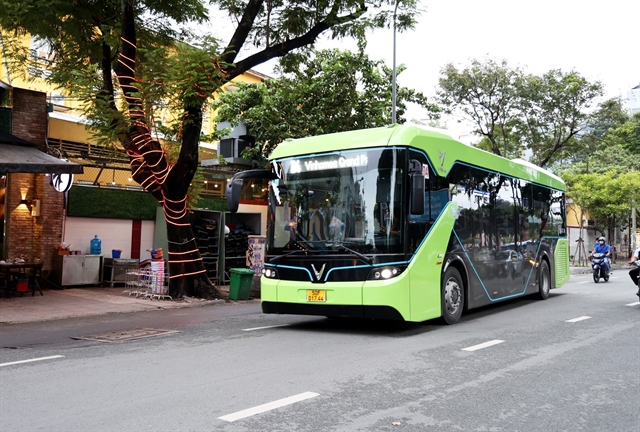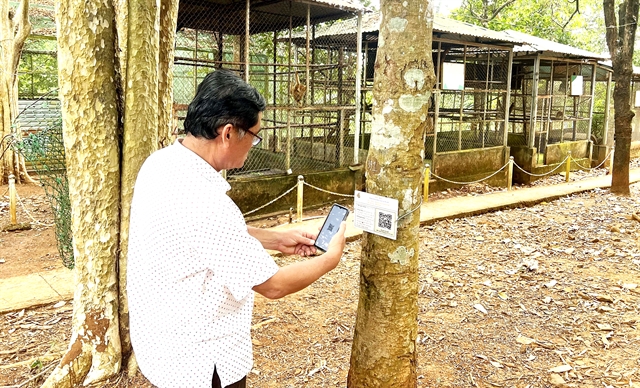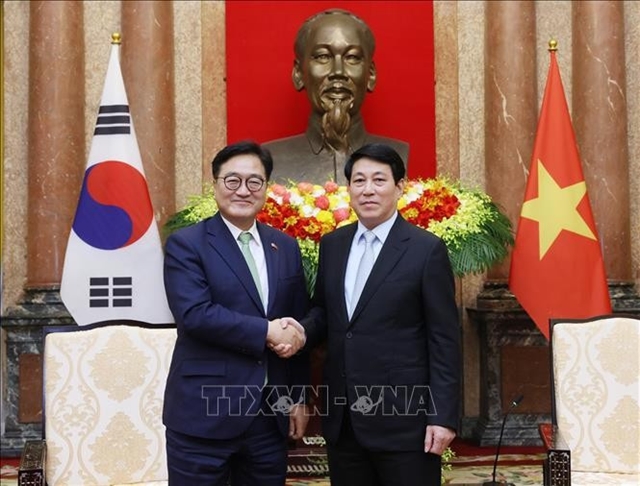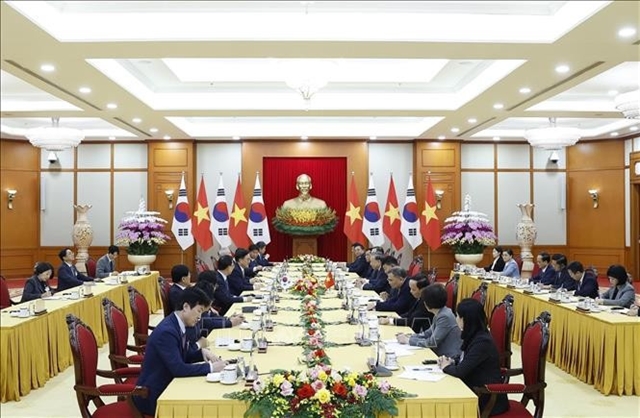 Environment
Environment

 |
| QR codes on forest trees in the Bù Gia Mập National Park help visitors easily look up information on how to protect and develop forests. — VNA/VNS Photo Đậu Tất Thành |
BÌNH PHƯỚC — With just a simple code, scanned on a mobile phone, visitors now can access a database of each tree species in the jungle at the Bù Gia Mập National Park in Bình Phước.
The QR codes attached to heritage trees not only help connect people with nature through technology, but are also an important step in the journey of conserving and developing forests in a modern and sustainable direction.
With a growing passion to preserve and introduce forest values in a modern way, all heritage trees in the national park now have QR codes attached, turning them into a living museum.
By simply scanning the code with a mobile, a whole catalogue of information appears, from each tree species' name, to its uses and to details about the best growing environment.
Deputy Director of the Centre for Tourism Education, Conservation and Rescue under the Bù Gia Mập National Park, Đỗ Trường Giang, said: “This is not only a simple technical improvement, but also a strategic step in the digital transformation process associated with ecotourism development.”
Giang said that attaching QR codes to forest trees opened up an effective space for learning, experience and education for visitors.
Thanks to the simple process, people can access information about forest trees in an intuitive, proactive and easy way, which will hopefully encourage them to be more environmentally active.
It is a way to raise public awareness of the role of forests in everyday life, while motivating visitors to become tour guides and spread the spirit of loving and protecting trees.
“Attaching QR codes to trees is also a part of the overall picture in the national park’s modern conservation strategy, in the context of the industrial revolution penetrating every aspect of life. Instead of monotonous wooden nameplates, with QR codes, visitors will easily identify trees, understand their uses and know their distribution status with just a smartphone,” Giang said.
Excited visitors
Being born in and growing up near the forest, Trần Huyền Trang, a member of the Bù Gia Mập Commune Youth Union, was extremely happy and excited when the forest trees got their QR technological 'shirt'.
She said that attaching QR codes to trees would help tourists, and especially students, to be closer to nature and encourage them to love the forest more.
Importantly, Trang believes that with QR codes, identification will be easily conveyed - with just a quick scan you will get all the information for each tree and that information will be displayed immediately.
“Applying QR technology to community education is also a way to spread information widely. People do not need to memorise scientific names, but can still convey stories about forests. From there, knowledge is no longer the monopoly of researchers or tour guides, but becomes common when everyone can access, share and spread it,” said Trang.
As a frequent traveller, when coming to the Bù Gia Mập National Park, Huỳnh Thu Thuỷ, from Trảng Bàng Town in Tây Ninh Province, was surprised and delighted seeing the forest trees with QR codes.
Thuỷ said that it was a pioneering and modern way of doing things, not only helping visitors easily learn about the forest, but also creating a sense of initiative and excitement during the exploration process.
“The first time I saw a forest tree with a QR code, I was extremely excited and felt proud of the forest. In my opinion, this method is very useful, especially for students. Because in an era when young people are chasing after new and developed things, applying technology to forest trees will easily attract them,” said Thuỷ.
Deputy Director of the Bù Gia Mập National Park Management Board Hoàng Anh Tuấn said that this year, the park would expand biological data digitisation, improve the signboard system, publish a handbook to identify precious plants and medicinal plants in the forest, and develop an interactive information system along ecotourism routes.
These are important preparatory steps in building a modern environmental interpretation model, attracting visitors through practical experiences combined with technology.
“We will continue to improve the data system, expand QR codes for many other tree species and integrate more digital content such as audio and instructional videos. The goal is to turn the forest into a living museum where everyone can learn, understand and actively share ecological knowledge," said Tuấn. — VNS




